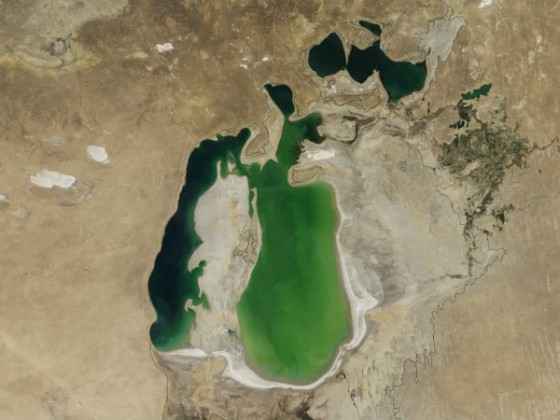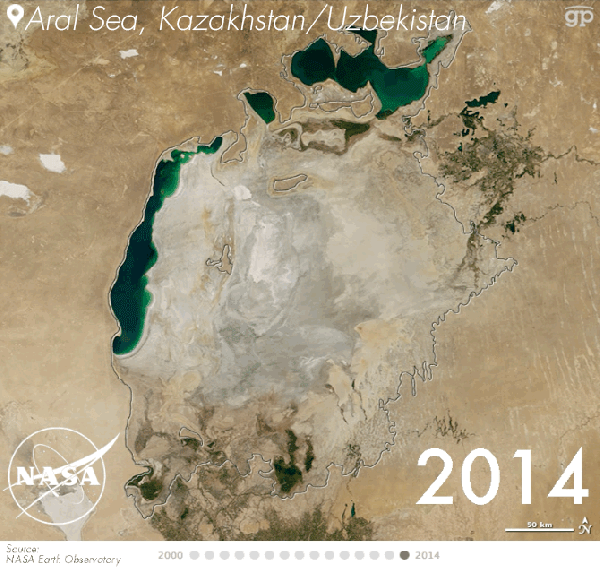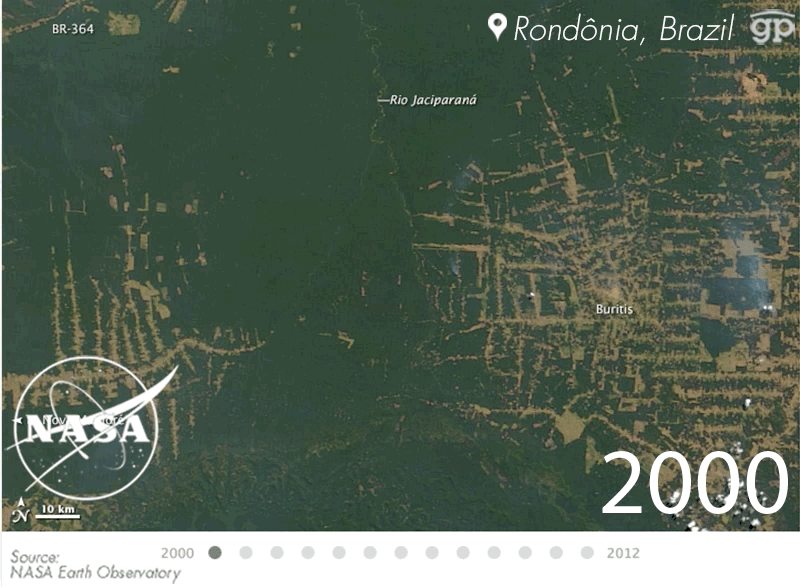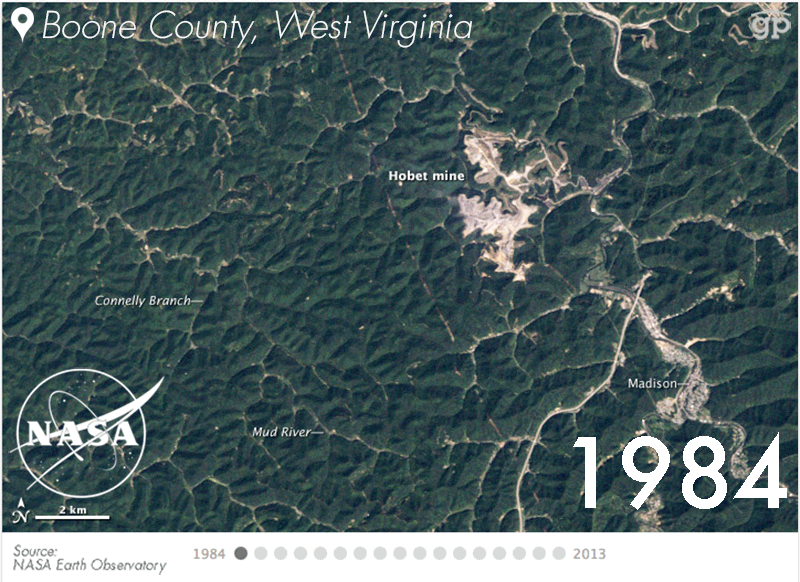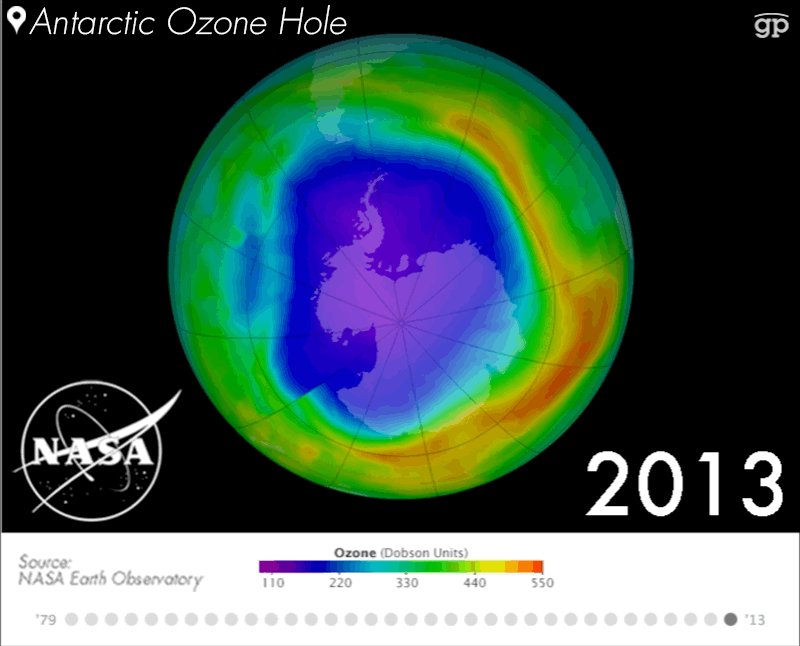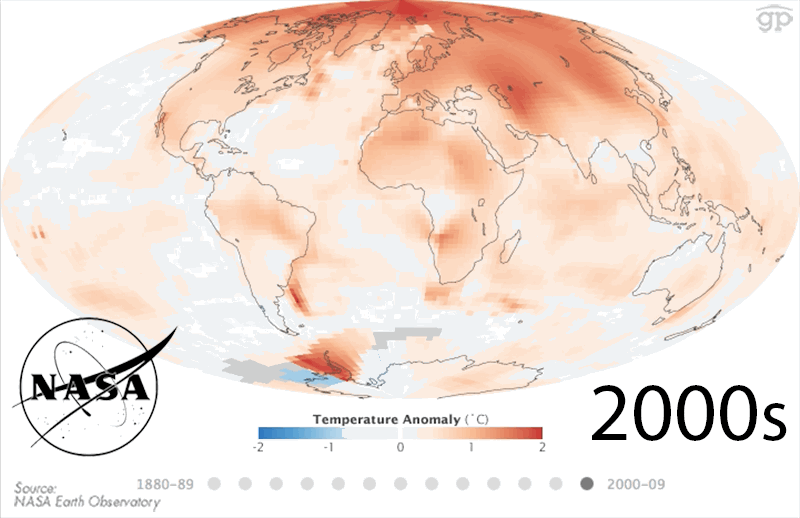IN AN EFFORT to show us our impact on the planet, NASA’s Earth Observatory has a series of time-lapsed images from around the world. Each one shows the significant impact of humans have on the environment around them.
The Aral Sea is practically gone.
On the border between Kazakhstan and Uzbekistan is the Aral Sea. Once well supplied with water by the region’s two major rivers, the sea lost its river sources in the 1960s when the Soviet Union undertook a massive water diversion project to irrigate its desert.
